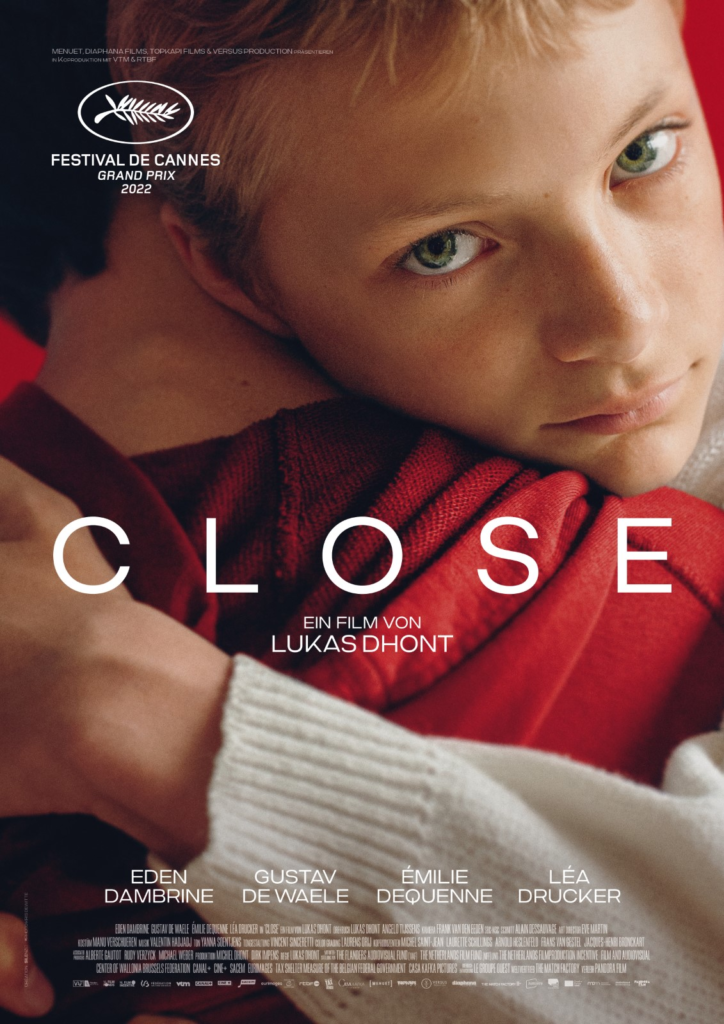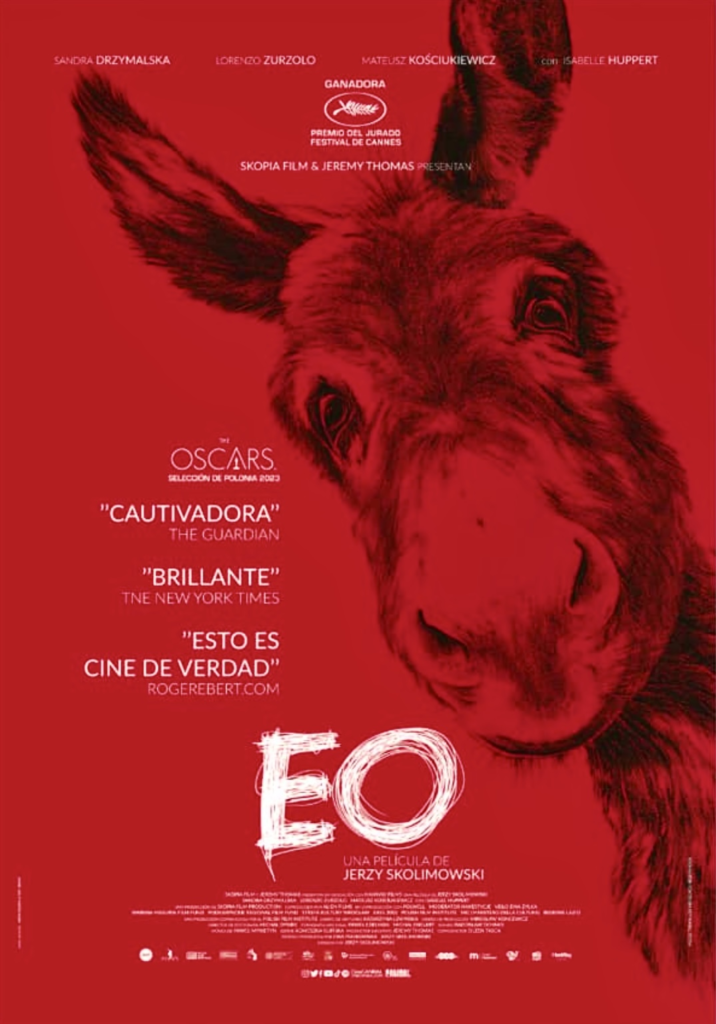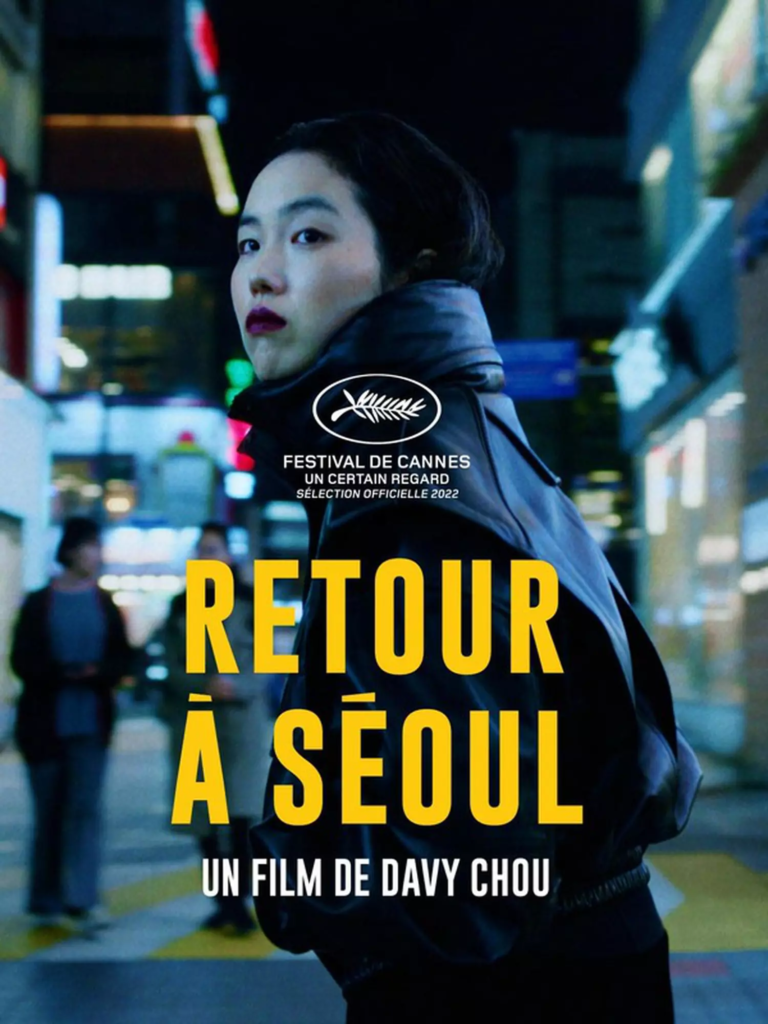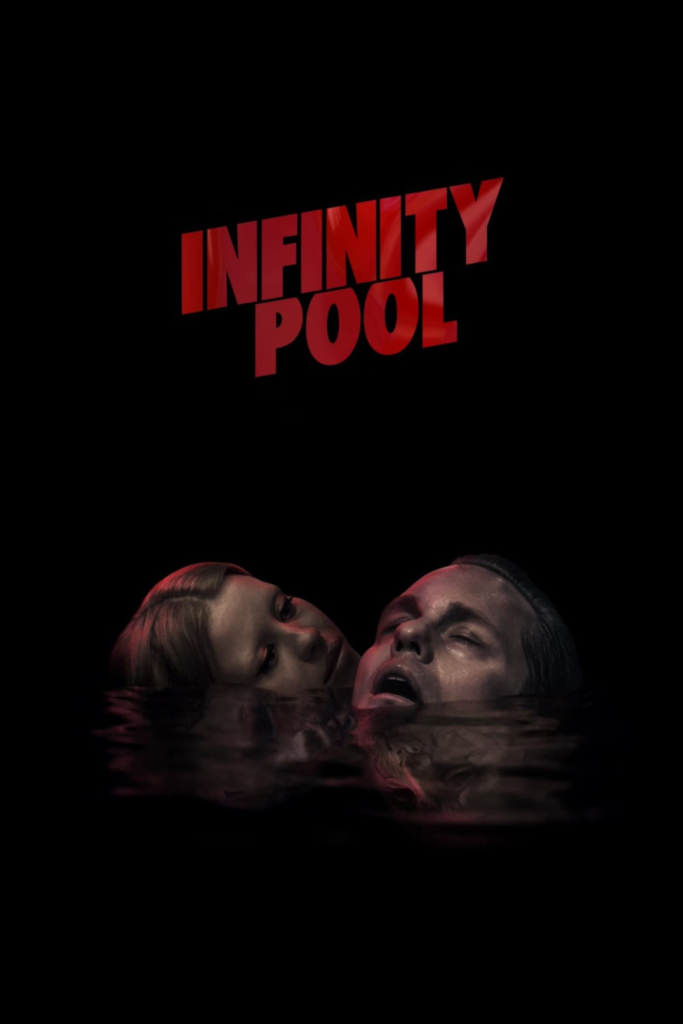1. St. Omer

I’m still perplexed as to why France’s entry in the Oscar sweepstakes from last year, a tough-minded, heartbreaking drama about race, class, and motherhood, wasn’t recognized. Alice Diop makes effective use of her background as a documentary filmmaker by basing her narrative on the true story of a young Senegalese lady who was accused of leaving her child for dead on a French beach. Rama is a fictional character created by Diop who attends the trial while pregnant and plays on her own uncertainties and worries. Guslagie Malanda portrays Laurence, the accused mother, with an uncharacteristically cool and seemingly resigned demeanor. Even though Rama’s face is expressionless, Kayije Kagame as Rama allows you to see her mind running and her heart racing as she watches. Diop based her language on court records, but the results go far beyond dry facts on a page to create a riveting movie with two insightful and colorful women on screen. (CJ)
2. Close

With another delicate yet profoundly devastating coming-of-age drama that is so realistic you could think it is a fly-on-the-wall documentary, Lucas Dhont follows up his critically acclaimed first, Girl. Its protagonists are two 13-year-old boys named Léo (Eden Dambrine) and Rémi (Gustav de Waele), who have a close friendship in rural Belgium. However, peer pressure strains their relationship to breaking point when they enroll in a new school. Dhont recognizes that it doesn’t require overt bullying to make young people feel as though they are under intolerable attack because of his superhuman sensitivity to the suffering of being a teenager. Casual inquiries from the boys’ peers are sufficient to alter them for good. (NB)
3. Chapter 4 of John Wick

There is currently no competition for the year’s best mainstream, commercial movie, which goes to the most recent installment of the artistic, action-packed franchise starring Keanu Reeves as the assassin we support. A multi-million dollar bounty on Wick’s head forces him to embrace his inner James Bond as he travels through Paris, Berlin, and Osaka in an effort to survive. The action in this installment features plenty of martial arts, firearms, and swords, and director Chad Stahelski makes it just as visually gorgeous and entertaining as the previous Wick chapters. Reeves’ charming demeanor helps us identify with a character who has long since lost track of the bodies he has dispatched. The movie gives us one last chance to see Lance Reddick, who sadly passed away, in the role of the concierge, Charon, and Ian McShane is always a treat as Wick’s urbane coworker, Winston. (CJ)
4. Holy Spider

The horrifying Holy Spider by Ali Abbasi is based on the true account of Mehdi Bajestani, a married builder, who murdered 16 sex workers in Mashhad, a sacred city in Iran, between 2000 and 2001. It initially appears to be an eerie companion piece to Silence of the Lambs and other big-screen serial-killer dramas, starring Zar Amir Ebrahimi (winner of the best actress prize at Cannes) as the dedicated journalist investigating the killings. Provocatively, some residents and politicians saw the murderer as a local hero on a campaign for morality. The study of societal misogyny that lies behind Holy Spider’s generic thrills seems all the more pertinent in the wake of the Mahsa Amini protests. (NB)
The worst examples
In certain cases, non-professional actors can come off as incredibly unnatural on television, but this is not the case in this witty, lighthearted yet serious fiction about kids and teens in a run-down neighborhood in northern France. The meta-drama’s central plot device is the casting of actual students as fictionalized versions of their own stories. That is precisely the method used by former casting directors Lise Akoka and Romane Gueret in their film The Worst Ones, whose satirical title alludes to the negative reputation of the young actors. The four actors—two kids, two teens, and a middle-aged man—are all compelling and have natural screen presence as they interact with and make fun of the heartless director. The Worst Ones, which took home the top honor in the Un Certain Regard category at Cannes last year, has a casual ease that develops into a profound examination of the exploitation and voyeurism involved in documenting actual lives. (CJ)
6. EO

A donkey that was a performer in a Polish circus is transported to live in an equestrian center after the circus is shut down. But he doesn’t linger for too long. Instead, our long-eared hero makes his way around Europe while appearing in a number of other episodes that span several different genres. His picaresque adventures, which were influenced by Robert Bresson’s Au Hasard Balthazar, are characterized by their strikingly psychedelic camerawork, editing, and soundtrack, as well as their grief at man’s inhumanity to man (and man’s inhumanity to donkey). The director of EO, Jerzy Skolimowski, is 84 years old, but he has never been more enthusiastic or committed. Another movie this year won’t be as extravagantly strange, charming, loving, and mischievous as this one. (NB)
7. Go back to Seoul

The plot of Davy Chou’s small-budget movie is rather straightforward. Freddie, a mid-20s Korean lady who was adopted as a baby and raised in France, makes a difficult trip to Seoul in search of her biological parents. But as the narrative progresses, it skips ahead two years, then five, and shows how Freddie’s sense of identity changes in surprising, utterly compelling ways. Does she wish to discover her mother or not? Is she French or Korean? Does she appear like a glossy businesswoman or a grungy student? Chou has a new and brisk style, while Park Ji-Min as Freddie is lively and unpredictable. With a polished appearance and cozy atmosphere, he places the story in commonplace locations like workplaces, cafés, and winding streets. The film’s fascinating swirl of identity is better encapsulated in the original English title: Everybody I’ll Never Be. (CJ)
8. A pool with no end

Infinity Pool, the newest film in the expanding “rich people have a bad time on an island” subgenre, reflects Triangle of Sadness, Menu, and Glass Onion but is murkier and more poisonous than any of them. A failing author who travels to a posh beach resort with his affluent wife is portrayed by Alexander Skarsgrd. He learns too late that the nation has a policy of instant execution for specific crimes, and from that point on, his holiday from hell only gets bloodier and more bizarrely jaw-dropping. It’s true that both the character and the movie lose their way, but this whirlwind of extreme cinema shows that Brandon Cronenberg, the film’s writer-director, is talented enough in his own right that we should probably stop comparing him to his father, David Cronenberg, and that its co-star Mia Goth, who is equally impressive in Pearl, is one of the most extraordinary actresses of her generation. (NB)





